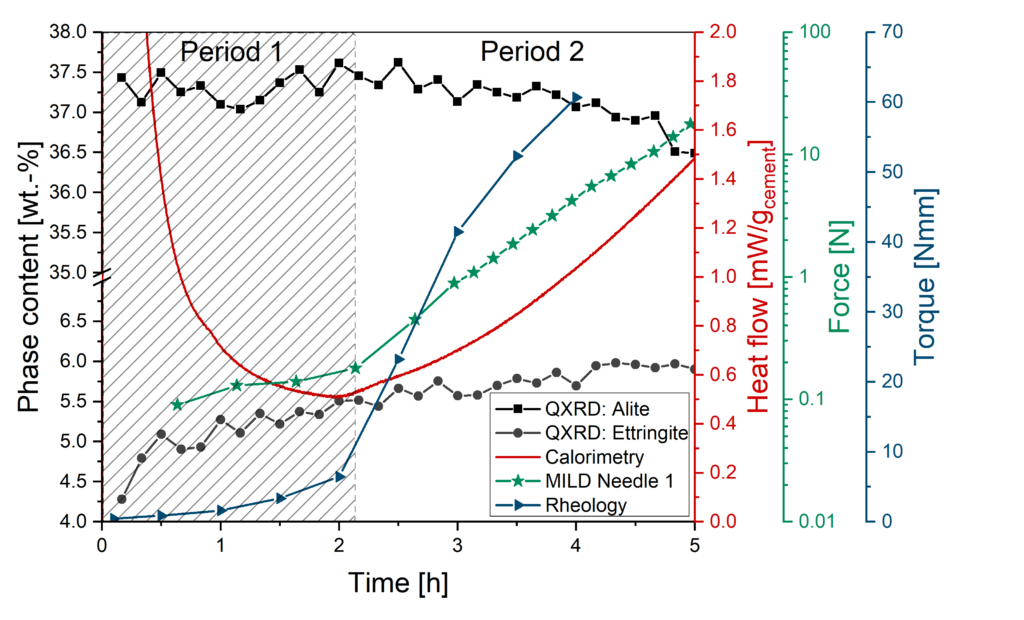12. Rheology-active additives in OPC based formulations – From nano/micro-scale structures to macro scale properties
Principal investigator(s) – PI
- Uni.-Prof. Dr. rer. nat. Dietmar Stephan
TU Berlin, Fachgebiet für Baustoffe und Bauchemie
Researcher(s) in-charge – RI
- M.Sc. Ursula Pott
Technische Universität Dresden, Institut für Baustoffe - M.Sc. Cordula Jakob
Geozentrum Nordbayern, Lehrstuhl für Mineralogie
Associated researcher(s) – AR
- Dr. rer. nat. Daniel Jansen
Geozentrum Nordbayern, Lehrstuhl für Mineralogie - Prof. Dr. Jürgen Neubauer
Geozentrum Nordbayern, Lehrstuhl für Mineralogie
Subject Area
Rheology; Cement hydration; Building material additives
Term
2018-2021
Project identifier
Deutsche Forschungsgemeinschaft (DFG) – Projekt number 386869775
Project Description
Two substantial goals are pursued in this proposal. Initially, the highly time-resolved (ca. 10min) evolution of the relevant rheology determining parameters during the early cement hydration will be traced and evaluated. Here the evolution of the morphology and the amount of the forming hydrate phases as well as the availability and amount of the residual unbound and rheology active water fraction play a significant role. These parameters and others will be traced and quantified by a combination of different physical, chemical, and rheological analytic methods. Beside calorimetry, quantitative X-ray diffraction, 1H-TD-NMR, rheometer, and ultra-sound measurements, a new developed penetration test method is used to observe the rheological behavior of cementitious materials. The combination of these methods will hold the information of a deeper understanding of the underlying mechanisms, which are determining the rheology of fresh cement pastes. Important to highlight that most of the proposed analytic methods provide overlapping information, allowing a cross validation in order to confirm the consistency of the measured results. In the second part the influence of rheology active additives on the above-mentioned parameters will be evaluated. Thereby important information on the effect of building additives and the fundamental working mechanisms of the superimposition of cement hydration and the development of rheological properties over time are expected. This information is compulsory for further in deep understanding of the rheology in fresh concretes.

Publications
Data in Brief 27 (2019)
Materials 12 (18) (2019)
in: V. Mechtcherine, K. H. Khayat, E. Secrieru (Eds.), Rheology and Processing of Construction Materials, pp. 219–227 (2019)
in: V. Mechtcherine, K. H. Khayat, E. Secrieru (Eds.), Rheology and Processing of Construction Materials, pp. 246–255 (2019)
Materials 13 (4) (2020)
Data in Brief 30 (2020)
Materials and Structures 53 (2020)
Cement and Concrete Composites 121 (2021)
